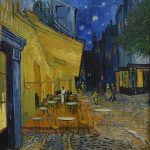
Arguably, Breton’s fame peaked posthumously in 1934 at The Chicago World’s Fair. First Lady Eleanor Roosevelt unveiled The Song of the Lark as the winner of the Chicago Daily News contest to find the “most beloved work of art in America”. Further, she declared the painting as being her personal favorite painting.
“At this moment The Song of the Lark had come to represent the popular American artistic taste on a national level.” Of course, since The Song of the Lark was recently given to the Art Institute of Chicago this particular work of Breton had an advantage over Breton works at other American museums.
Breton, however, was not universally appreciated. The American art establishment of the 1930’s considered works of Breton to be lowbrow and the director of the Art Institute of Chicago itself argued for the removal of the work from display.
To a degree, one can argue that posthumously Breton’s fame fell victim to the success during his lifetime. His most detailed works either went straight into museums or were collected by the likes of Henry Clay Frick, the Morgan family, Henry Huntington and Field family.
Loss of Fame
These were collectors of such great wealth that they tended to either donate their collections to their favorite local museum or founded their own museum such as the Huntington. Meanwhile, the exponential increase in printmaking in the 19th century flooded the market with inexpensive prints of Breton’s works. In 2019, dozens of these 19th century prints are available on websites like EBay beginning at under $10.
Breton’s change in fame can be contrasted with his contemporary the artist Vincent van Gogh. During their lifetimes, Breton was a celebrated and highly paid success who spent months creating some of his works. Whereas, in 1880 Vincent van Gogh was so poor he walked on foot 85 miles to Courrières to pay a visit to Breton, whom he greatly admired, but turned back, put off by Breton’s high wall.
No great collectors flocked to purchase van Gogh’s works during his lifetime, he received no commissions to paint from New York City, no prints were made, and van Gogh died in poverty. However, at a 2105 auction van Gogh’s work Paysage Sous un ciel Mouvement, painted at a time he generated one work per day, commanded $54 million. Source: Wikipedia.




